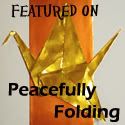


In the hills surrounding Littleton, New Hampshire, this piece of local history sat in a sad state of disrepair on the verge of foreclosure for back taxes.
As I set about the LONG process of saving this beauty I became intrigued with its history. During countless trips North I began researched the deeds to this property. Imagine my surprise to discover the "1820" over the front door was the date of the "modernization" of this old beauty & that the original structure dated back to (approx ) 1789!
Armed with names from old deeds, the 1905 texts : The History of Littleton, Old Gazetteers & maps, I essentially did the 'genealogy" of the house. There were many local stories about the house and I was anxious to uncover the facts. After extensive research, talks with local historians, treks through ancient cemeteries I finally had what I believed to be an accurate history of the house.
"James Williams, a brother-in-law of Ebinezer Pingree, became a citizen of Littleton in 1789. He bought the Pingree property at North Littleton and established a tavern, over which he presided until his death in 1822. Mr Williams was a man of great enterprise, and soon had several acres under cultivation and before the close of the year a large & commodious log house built in which many a weary traveler in after years found rest & refreshment."
History of Littleton NH Annals Vol 1
One of the large upstairs rooms had primitive murals painted over plaster & lathe that had never been painted or papered over and were unsigned. Another mystery!
While researching folk art & mural painting in the 1800's I stumbled across Rufus Porter.
"Rufus Porter, an artist and inventor who lived from 1792 - 1884 and spent his boyhood years in the Bridgton, Maine area, helped to create an American culture. In his early years Porter painted small watercolor portraits from Maine to Virginia, then later moved on to landscape painting on walls of private homes throughout New England. His use of local landscapes with a vivid palette and broad, open brushstrokes was a departure from the styles and content of classical European wallpaper. Because most of his murals were unsigned, it was not until the mid 1930s that his body of work was authenticated through the publications of Jean Lipman. Today he is recognized as an icon of American art, inventor, and founder of the Scientific American magazine." http://rufusportermuseum.org/
Similar, but not quite right. After contacting the Smithsonian, Colonial Williams burg, The Museum of American Folk Art, and a painter familiar with the works & style of Rufus Porter, I still had no answers.
Fast forward 13 years: I receive an email with a picture attached inquiring: Is this your house? Ive been looking for you!







What happened? I have to know!!!
ReplyDeleteIm working on 'the rest of the story'I'll tell you soon, I promise Mary! Glad you stopped in!
ReplyDeleteOh how interesting, I too would like to hear more : )
ReplyDeleteBlessings for a Healthy, Happy and Prosperous New Year to you and your loved ones,
Doreen